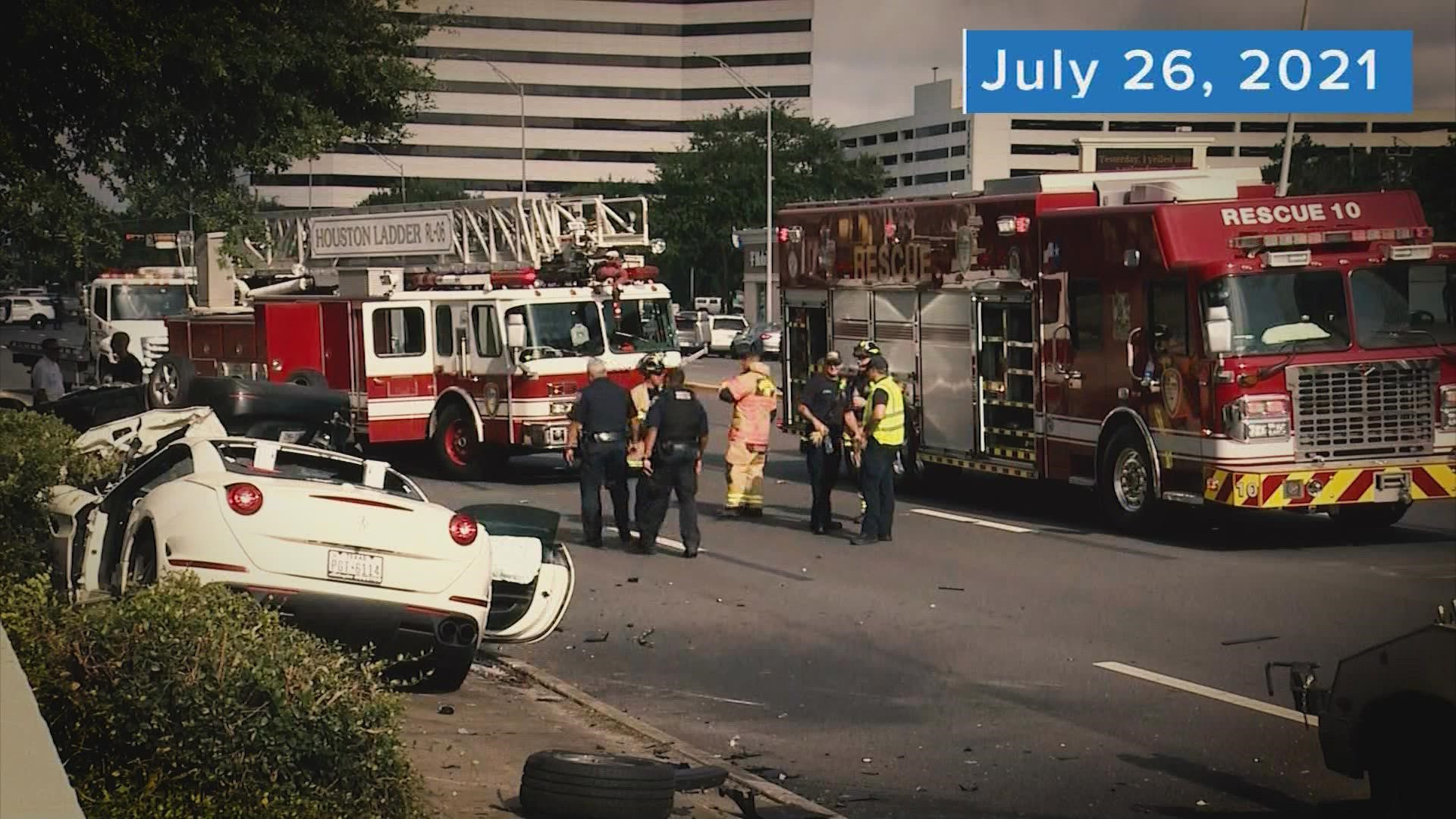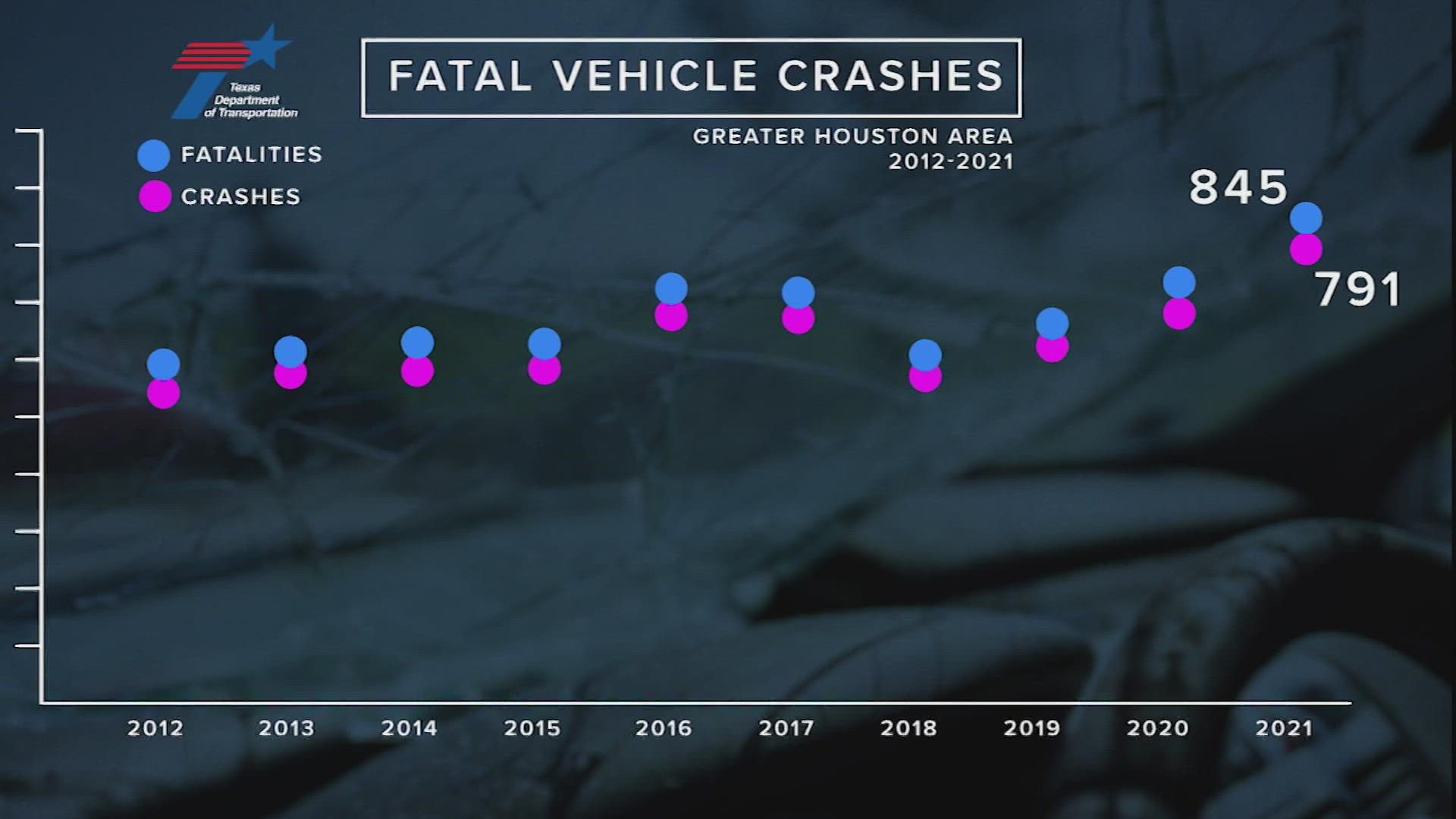HOUSTON — More people are dying in car crashes than over a decade ago. Speeding and drunk driving are the biggest contributors, according to a KHOU 11 Investigates analysis of Texas Department of Transportation data.
A new law, which makes safety technology equipment mandatory in new vehicles in three years, aims to make the roads safer.
Houston mom and Mothers Against Drunk Driving (MADD) advocate Carol Levin is behind a national effort to help get unsafe drivers off the roads. Her mission began 15 years ago when she lost her son, Todd, to a drunk driver.
“He was very handsome. He was very sweet. He was funny. Todd loved life,” Levin said.
Todd’s life ended tragically on Sept. 17, 2006.
“They left the restaurant at Shepherd and Westheimer about 8 o'clock on a weekday night, and on their way home. They got T-boned by a drunk driver,” Levin said.
Todd, 28, was killed instantly. His girlfriend, Raylynn Healey, 31, died on the way to the hospital.
“I felt my brain just click out. I said to myself, what would Todd want me to do? What would he really want me to do? Todd would want me to fight,” Levin said.
Carol took her fight to MADD, to the Texas State Legislature and to Washington, D.C.
“We've written letters. We've had Zoom calls. We're on the phone all the time with D.C. Our committee. We’d meet every Thursday,” Levin said.
As Carol fought, the problem got worse.
KHOU 11 Investigates looked at the fatal crashes reported by law enforcement to the TxDOT. In, 2021, 845 people died in 791 fatal crashes across the Greater Houston area. It was the most the region has seen in at least a decade.
Harris County District Attorney Vehicular Crimes Division Chief Sean Teare said he did not anticipate the increase.
“None of us did. “We truly thought we were going to see a decrease in the fatalities. Sadly, we didn’t,” Teare said.
Many fatal crashes happened on the freeways, but two areas outside of the interstate system saw nearly a dozen or more deadly wrecks. Highway 6 near Barker Reservoir with 11 fatal crashes and the 4-mile span west of the Galleria between Fountain View and South Gessner with 14 fatal crashes.
Teare believes the people who were on the roads took more chances.
“I think that for Harris County alone, for the first time, we don’t have gridlock. We didn’t have traffic jams, and the slowdowns that, amazingly, apparently saved lives,” Teare said.
As for what is causing the crashes, TXDOT data shows, speeding was a factor in 31 percent of them, intoxication in 28 percent. Teare says it comes as no surprise.
“Year in and year out, Harris County leads the nation in drug and alcohol related fatalities on the roads,” Teare said.
According to TXDOT data, alcohol-related traffic deaths in Greater Houston increased by nine percent in 2021 compared to 2020. Teare believes it is due to a change in driving patterns.
“We had all of our roads basically wide open, and the people who were out, some of them decided to drive those roads in a very unsafe manner,” Teare said.
Fifteen years later, Carol is making progress in helping to create legislation to prevent drunk driving. The solution, MADD said in a government filing last year, is auto safety technology.
“We needed desperately to make this a law,” Levin said.
It happened last November. The U.S. House and the Senate passed Advanced Impaired Driving Technology legislation, which calls for new safety equipment that would prevent drunk and distracted driving be installed in new vehicles in three years.
“I was beside myself. I was joyful. I was glorious,” Levin said.
Carol is just one of many people impacted who was instrumental in pushing for prevention technology.
Ken Snyder, executive director for Shingo Institute, which educates automotive executives around the world, said a drunk driver killed his daughter, Katie, in Los Angeles on Oct. 6, 2017. Katie, he said, was on her way home from the hospital after visiting her newborn twin girls in the NICU.
“It was a 50 mile per hour zone, three lanes in each direction. The drunk driver was coming from the opposite direction, sideswiped a car, almost rear-ended another car, veered to the right, hit a barricade, then veered across three lanes of traffic, hit this inter-median, launched into the air, and came down on top of our daughter,” Snyder said.
“After losing my daughter, I felt compelled that I had to do this,” Snyder said.
Snyder contacted MADD and some colleagues in the automotive industry.
“A typical conversation went something like this. ‘Isn't there a technology to prevent drunk driving?’ The executive would say, ‘Well, yes, there is,” Snyder said.
The Driver Alcohol Detection System for Safety (DADSS) research program is developing the technologies. They include systems that monitor the vehicle movement; another that monitors the driver’s head and eye movements using a camera or other sensors; and sensors to determine whether a driver is drunk and then prevent the vehicle from moving.
Snyder said most cars are wired for the technology and would simply need the software added to them to become compatible with the technology.
“This is something that exists on some cars already. One of the questions that might come up is, ‘How much will this add to the cost of a car?’ It doesn’t necessarily need to add anything. It’s a one-time software fix,” Snyder said.
Levin said if it saves just one life, her fight to make roads safer will have been worth it.
“I feel like I’ve really honored my son and my future daughter-in-law. I feel as though I’m helping, I am really becoming part of something so big. I’m really helping so many others save lives,” Levin said.
The National Highway Traffic Safety Administration is tasked with establishing rules and vehicle standards for impaired driving safety equipment.
Automakers will be given two to three years to implement the new safety standards. New cars equipped with that technology could start rolling off the assembly line as soon as 2025.
MADD is now lobbying for recalls that would require the tech to be installed in all vehicles.


